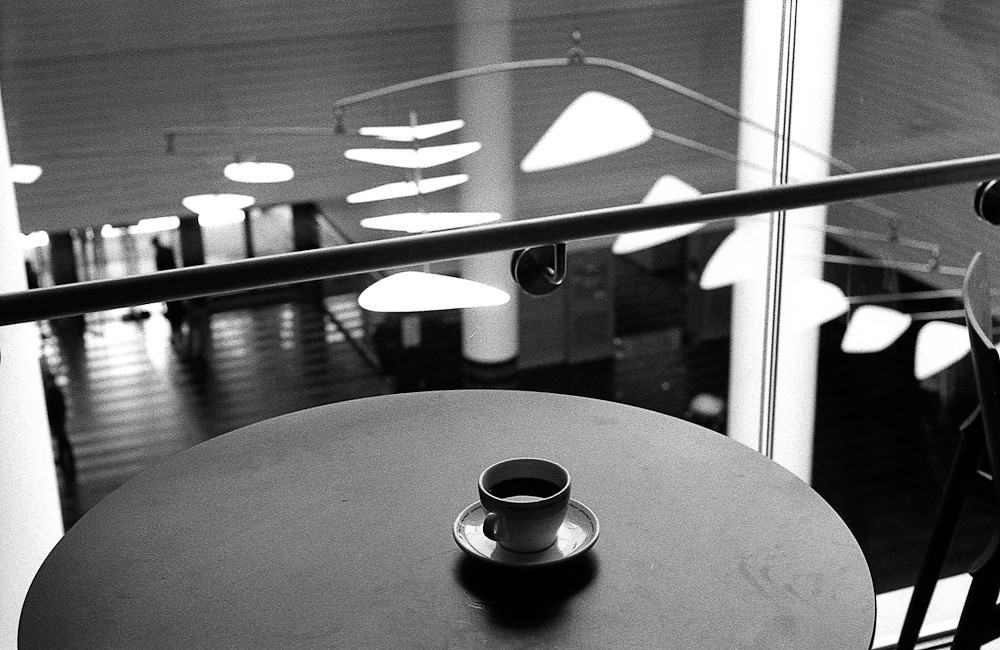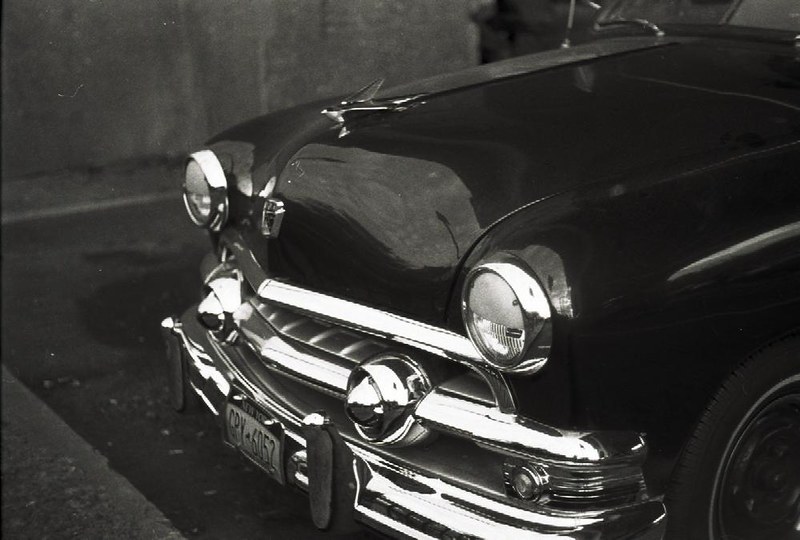Garage Angles
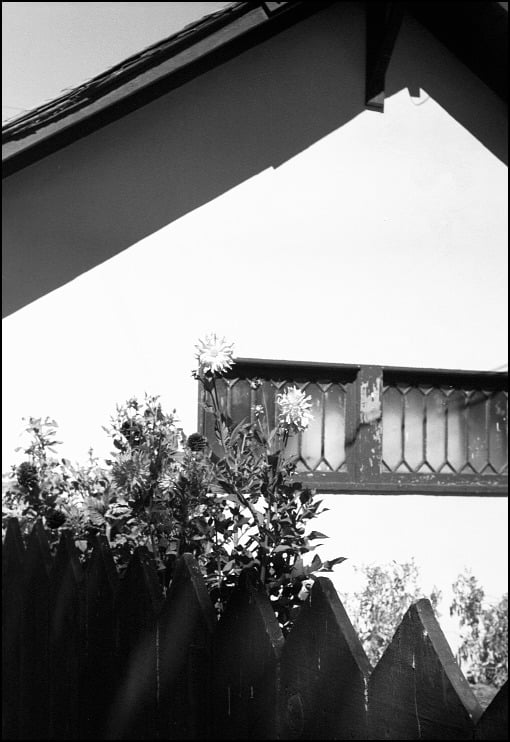
Kiev 4A, Jupiter-8M (1969)

Kiev 4A, Jupiter-8M (1969)
Swift1
Mentor
I've only ever had the opportunity to use a few different Jupiter-8 50/2, but all seemed like fine lenses. I nearly bought myself a Nikkor ltm version to use on my Canon 7, but then I found the Canon 50/2.2
The nicest I've used is probably this 1957 copy that came on my 1957 Zorki 4.
Here's a photo taken with that Zorki 4 and Jupiter-8, on TMAX 100...
The nicest I've used is probably this 1957 copy that came on my 1957 Zorki 4.
Here's a photo taken with that Zorki 4 and Jupiter-8, on TMAX 100...
I picked up a Canon 50/2.2 about a year ago- smooth Bokeh, sharp- and A fine lens. Only made for 6 months. I went after one after seeing your pictures with it.
The 1950s J-8's that I've used have all been very good.
The 1950s J-8's that I've used have all been very good.
A 1968 KMZ Jupiter-8, adjusted for Leica. This one is good, I have seen a couple from the mid 1960s that had too much play in the Helical. Those tend to be the exception. I prefer the "Tabbed" J-8 of the 1950s.

When cleaning, make sure to keep the bottom ring in the same position as it was removed.

Wide-open, ISO 5000


ISO1250, wide-open.

F2, ISO320

And at F4.


When cleaning, make sure to keep the bottom ring in the same position as it was removed.

Wide-open, ISO 5000


ISO1250, wide-open.

F2, ISO320

And at F4.

Swift1
Mentor
The 1950s J-8's that I've used have all been very good.
I only wish the aperture had click stops
Here's my 1955 Arsenal made Jupiter-8. I really haven't used it much, but seems a fine lens.
and a photo taken with that camera and lens, on TMAX 100...
Bingley
Mentor
Steve, what kind of adapters do you use? The pictures look great.
Erik.
Many thanks, Erik! For Contax to Leica M mount, I use an Amedeo adapter (purchased from the Cameraquest). To mount the Carl Zeiss Opton Sonnar 50/2.0 (or the 50/1.5 for that matter) on an LTM camera, I use an adapter made by Kipon, which I acquired when I purchased a CZO Sonnar 50/1.5. This adapter is not as precisely machined as those made by Amedeo, but it works. I’ve seen them for sale on Ebay.
Bingley
Mentor
The Nikkor-HC 50mm f2.0 LTM is a really nice lens...
 Chevy by Steve Macfarlane, on Flickr
Chevy by Steve Macfarlane, on Flickr
and the close focusing feature is very handy ...
 Grandma’s hands... by Steve Macfarlane, on Flickr
Grandma’s hands... by Steve Macfarlane, on Flickr
 Chevy by Steve Macfarlane, on Flickr
Chevy by Steve Macfarlane, on Flickrand the close focusing feature is very handy ...
 Grandma’s hands... by Steve Macfarlane, on Flickr
Grandma’s hands... by Steve Macfarlane, on FlickrBingley
Mentor
Of fthe Japanese Sonnar-formula lenses, however, I’m very fond of the Canon 50mm f1.5...
 Q by Steve Macfarlane, on Flickr
Q by Steve Macfarlane, on Flickr
 Temple Coffee by Steve Macfarlane, on Flickr
Temple Coffee by Steve Macfarlane, on Flickr
 C&E by Steve Macfarlane, on Flickr
C&E by Steve Macfarlane, on Flickr
The Canon does very well wide open, but is at its best around f4.0, making it a good choice for general photography as well as wide-open photos where the Sonnar look is desired.
 Q by Steve Macfarlane, on Flickr
Q by Steve Macfarlane, on Flickr Temple Coffee by Steve Macfarlane, on Flickr
Temple Coffee by Steve Macfarlane, on Flickr C&E by Steve Macfarlane, on Flickr
C&E by Steve Macfarlane, on FlickrThe Canon does very well wide open, but is at its best around f4.0, making it a good choice for general photography as well as wide-open photos where the Sonnar look is desired.
keytarjunkie
no longer addicted
Nikkor-H•C 5cm f/2 in Nikon S-mount, I picked it up on ebay for $40. HP5+ pushed to 800.
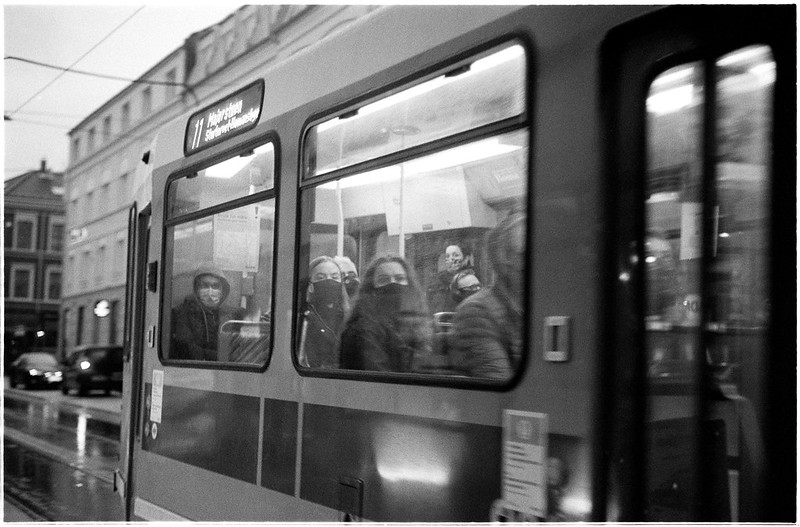



keytarjunkie
no longer addicted

On the left is the Millennium-Nikkor, a Double Gauss design from the early 60's re-introduced with modern coatings in 2000. This is the gold standard of the Nikon RF system, known for its flat field of focus, and great performance. I have been really happy with it, but it definitely has a more modern look for portraits than a classic Sonnar lens.
On the right is the Nikkor-H•C 5cm f/2, a decendant of the Zeiss Sonnar, and one of Nikon's most popular designs from the rangefinder era. I believe they began designing it before the war, but couldn't source the right glass until 47 or 48...but Brian probably knows more of the history! It is incredibly small and great to walk around with, compared to the Millennium lens which is rather front-heavy on the Nikon rangefinders. The 5cm here is "propped up" by the black ring which secures the optical unit to the barrel, but when mounted on a camera, the difference is even larger. I know it is optically the same as the LTM version.
Many prefer the 5cm f/1.4 Nikkor SC (derivative/rival of the faster Zeiss f/1.5 Sonnar), but personally I like the f/2 lens for its smaller size and slightly less glowy wide open performance.
I had to take it apart myself to wipe oil from the aperture blades and do a general clean. Fortunately this is a pretty easy process! I will post some more photos taken with my lens here soon. Great thread!
Peter Dechert states that the Nikkor 5cm F2 and Nikkor 5cm F1.5 were announced in 1937, and that the 5cm F2 lens was shown with the Hansa Canon in 1938. The F1.5 lens was not shown. I've also read that the Simlar 5cm F1.5 was computed in 1937.
It took me a long time to find a 5cm F1.5 Nikkor, mine is in LTM.
It took me a long time to find a 5cm F1.5 Nikkor, mine is in LTM.
Bingley
Mentor
raid
Dad Photographer
I have such lenses as you have shown here. I bought the S3 2000 set just to get the Millenium Nikkor 50/1.4. The Nikkor 50/2 is a very nice performing lens too. I do have a Sonnar 5cm/2 that at some time was grafted into an Elmar ltm barrel. A great lens indeed.
I have quite a few Sonnar 5cm lenses. It is difficult to dislike any of them. This was taken with a Contax IIa and a 5cm/2 Sonnar.
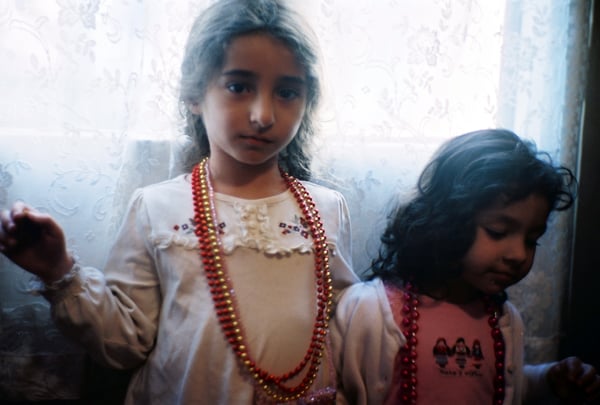
Zeiss Jena 5cm 1.5
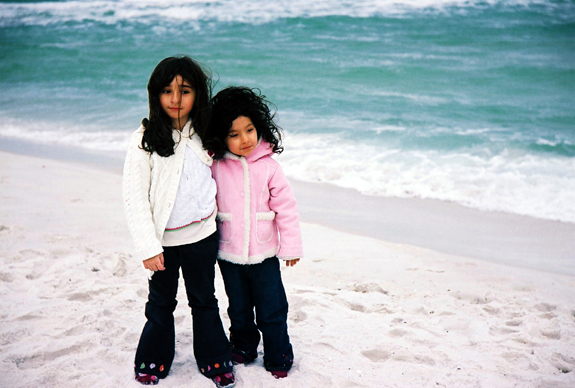
Raid
I have quite a few Sonnar 5cm lenses. It is difficult to dislike any of them. This was taken with a Contax IIa and a 5cm/2 Sonnar.

Zeiss Jena 5cm 1.5

Raid

On the left is the Millennium-Nikkor, a Double Gauss design from the early 60's re-introduced with modern coatings in 2000. This is the gold standard of the Nikon RF system, known for its flat field of focus, and great performance. I have been really happy with it, but it definitely has a more modern look for portraits than a classic Sonnar lens.
On the right is the Nikkor-H•C 5cm f/2, a decendant of the Zeiss Sonnar, and one of Nikon's most popular designs from the rangefinder era. I believe they began designing it before the war, but couldn't source the right glass until 47 or 48...but Brian probably knows more of the history! It is incredibly small and great to walk around with, compared to the Millennium lens which is rather front-heavy on the Nikon rangefinders. The 5cm here is "propped up" by the black ring which secures the optical unit to the barrel, but when mounted on a camera, the difference is even larger. I know it is optically the same as the LTM version.
Many prefer the 5cm f/1.4 Nikkor SC (derivative/rival of the faster Zeiss f/1.5 Sonnar), but personally I like the f/2 lens for its smaller size and slightly less glowy wide open performance.
I had to take it apart myself to wipe oil from the aperture blades and do a general clean. Fortunately this is a pretty easy process! I will post some more photos taken with my lens here soon. Great thread!
MXP
Established
I found a bit more info about the Nikkor H-C here:
https://casualphotophile.com/2017/0...eica-alternative-thats-more-than-just-a-copy/
I observed that it is a different lens design than the Nikkor H-C for SLR which is a kind of Gauss formular (6 elements in 4 groups).
https://casualphotophile.com/2017/0...eica-alternative-thats-more-than-just-a-copy/
I observed that it is a different lens design than the Nikkor H-C for SLR which is a kind of Gauss formular (6 elements in 4 groups).
It should be noted that the Nikkor 5cm F2 was designed before WW-II, was designed in 1937. The lens was originally sold for the Hansa Canon. I've read multiple Internet Sites claim that Nikon designed the lenses after the patents were invalidated after WW-II- but this is not true. The Nikkor is a different focal length from the Zeiss lens, it is not an exact copy- it uses the same 6elements in 3 groups, 1-3-2 layout. The individual elements are different prescriptions.
(Edited- Senior moment, corrected to be the 6/3 Sonnar formula. Was thinking of the 1-3-3 formula of the Sonnar 5cm F1.5, Nikkor 5cm F1.5, and Nikkor 5cm F1.4) Going through Tens of Thousands of lines of code today...brain meltdown. Just remembered- the Walz 35 has a 7/3 4.8cm F1.9 Sonnar formula lens in it.
The Nikkor 5cm F2 is hard-coated, my 1948 collapsible Nikkor 5cm F2 looked like wax paper when bought, haze on each side of the aperture, It cleaned up perfectly. The Zeiss "T" lenses from the late 1930s and 1940s also are hard-coated on the outer surfaces: I've seen a mix of coatings used on inner surfaces. The Leica lenses originally had soft lens coatings.
(Edited- Senior moment, corrected to be the 6/3 Sonnar formula. Was thinking of the 1-3-3 formula of the Sonnar 5cm F1.5, Nikkor 5cm F1.5, and Nikkor 5cm F1.4) Going through Tens of Thousands of lines of code today...brain meltdown. Just remembered- the Walz 35 has a 7/3 4.8cm F1.9 Sonnar formula lens in it.
The Nikkor 5cm F2 is hard-coated, my 1948 collapsible Nikkor 5cm F2 looked like wax paper when bought, haze on each side of the aperture, It cleaned up perfectly. The Zeiss "T" lenses from the late 1930s and 1940s also are hard-coated on the outer surfaces: I've seen a mix of coatings used on inner surfaces. The Leica lenses originally had soft lens coatings.
dourbalistar
Buy more film
It should be noted that the Nikkor 5cm F2 was designed before WW-II, was designed in 1937. The lens was originally sold for the Hansa Canon. I've read multiple Internet Sites claim that Nikon designed the lenses after the patents were invalidated after WW-II- but this is not true. The Nikkor is a different focal length from the Zeiss lens, it is not an exact copy- it uses the same 7elements in 3 groups, 1-3-3 layout. The individual elements are different prescriptions.
The Nikkor 5cm F2 is hard-coated, my 1948 collapsible Nikkor 5cm F2 looked like wax paper when bought, haze on each side of the aperture, It cleaned up perfectly. The Zeiss "T" lenses from the late 1930s and 1940s also are hard-coated on the outer surfaces: I've seen a mix of coatings used on inner surfaces. The Leica lenses originally had soft lens coatings.
FWIW, Nikon's own The Thousand and One Nights series says that the 5cm f/2 was developed around 1935, for Hansa Canon as Brian notes. Lots of interesting history about the development of the Nikkor-H.C 5cm f/2 lens:
https://imaging.nikon.com/history/story/0034/index.htm
helen.HH
A smile & a wink…
YUM to the LTM 50 f2 nikkor

A Portrait of Double Trouble by Helen Hill, on Flickr

Longing and repose... by Helen Hill, on Flickr

A Portrait of Double Trouble by Helen Hill, on Flickr

Longing and repose... by Helen Hill, on Flickr
helen.HH
A smile & a wink…
helen.HH
A smile & a wink…
The Nikkor-SC 5cm F1.4 gets all the attention.
The pictures taken with the Nikkor-H 5cm F2, whether on the Nikon rangefinder or the Leica- just look smoother. The lens is usually found in better condition that the pre-war 5cm F2 Sonnar, which has soft glass for the front element. The post-war West German 50/2 Sonnar often suffers from element separation. The post-war Zeiss Jena 5cm F2 Sonnar also has soft glass for the front element. The Tanar 5cm F2 is "uncommon", but equal to the Nikkor. The J-8 must be shimmed/adjusted for the Leica.
All this adds up- the Nikkor 5cm F2 is the easiest to find and use Sonnar formula lens in Leica mount, and it sells for a reasonable price.
The pictures taken with the Nikkor-H 5cm F2, whether on the Nikon rangefinder or the Leica- just look smoother. The lens is usually found in better condition that the pre-war 5cm F2 Sonnar, which has soft glass for the front element. The post-war West German 50/2 Sonnar often suffers from element separation. The post-war Zeiss Jena 5cm F2 Sonnar also has soft glass for the front element. The Tanar 5cm F2 is "uncommon", but equal to the Nikkor. The J-8 must be shimmed/adjusted for the Leica.
All this adds up- the Nikkor 5cm F2 is the easiest to find and use Sonnar formula lens in Leica mount, and it sells for a reasonable price.
Share:
-
This site uses cookies to help personalise content, tailor your experience and to keep you logged in if you register.
By continuing to use this site, you are consenting to our use of cookies.






